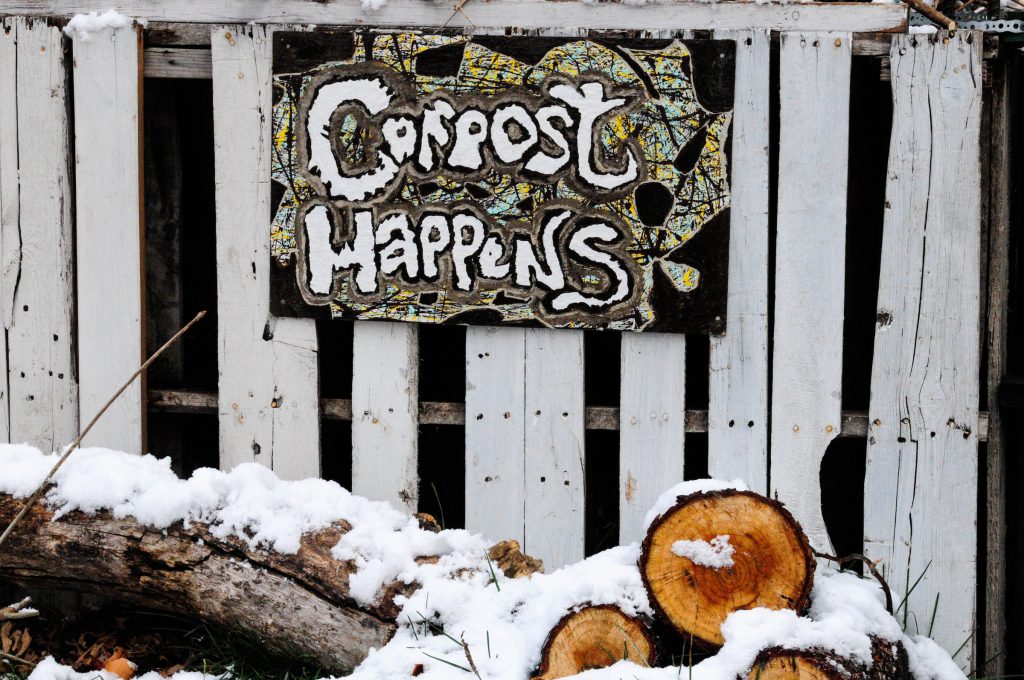Living in an apartment or simply don’t have space for individual composting at home? You’re not alone, and there’s a sustainable solution near you: neighborhood composting. This eco-friendly initiative is gaining traction, especially in urban areas like Brussels, where over 200 neighborhood composting sites already exist.

What is neighborhood composting?
The concept of neighborhood composting is straightforward. A communal compost bin is set up in an easily accessible location and made available to residents of a particular area. The aim is to encourage people to dispose of their food waste responsibly while reducing the amount of household waste generated.
What can you compost?
Acceptable items
In a neighborhood compost, you can deposit a variety of organic materials. These include fruit and vegetable peelings, coffee grounds, paper tea bags, garden waste, dead flowers and plants, eggshells, deciduous tree chippings (excluding conifers), untreated wood shavings and bark, straw, nutshells, and even tissues and paper towels.
Items to avoid
However, there are items you should avoid putting in the compost bin. These include sauces, fats and oils, cooked food leftovers, animal-origin waste (meat and fish), dairy products, bread, ashes, soil, sand, charcoal, vacuum cleaner dust, synthetic materials, metals, cigarette butts, newspapers, magazines, and compostable packaging.
More than just a waste disposal site
A neighborhood compost is not just a place to dispose of food waste; it’s a community hub. It serves as a meeting point for neighbors who are committed to making a positive, local, and long-lasting impact on the environment. Initially, people may come for the civic engagement, but they often return for the sense of community and camaraderie.
Convenience and flexibility
One of the best aspects of neighborhood composting is its convenience. You don’t have to wait for a specific collection day to dispose of your food waste. Whether you’re out for a walk, doing your shopping, or have just finished cooking, you can drop off your compostable waste whenever it suits you.
Quality of the compost
The collective nature of neighborhood composting ensures a high-quality end product. The variety of food waste and plant matter contributed by users guarantees a diverse range of composting materials. As a result, the compost produced is rich and well-balanced, offering excellent soil conditioning properties.
Getting involved
If you’re interested in participating in a neighborhood composting scheme, the first step is to locate a site near you. Many municipalities have information on local composting initiatives. Once you’ve found a site, get in touch with the organizers to understand the rules and guidelines. Some composting sites may require a small membership fee or volunteer hours to help maintain the site.
Starting your own neighborhood compost
If there isn’t a neighborhood composting site in your area, why not start one? You’ll need to:
Scout for a location
Find a suitable and easily accessible location that can accommodate a composting bin or pile.
Get permissions
You’ll likely need permission from local authorities or the landowner to set up a composting site.
Engage the community
Talk to your neighbors, friends, and local community groups to gauge interest and recruit participants.
Set up the composting site
Once you have enough interest and the necessary permissions, you can set up your composting site. You’ll need composting bins, signage, and perhaps even fencing.
Maintain the site
Regular maintenance is crucial for a successful composting site. This includes turning the compost, checking for contamination, and eventually, harvesting the finished compost.
Conclusion
Neighborhood composting is an excellent way to engage with your community while contributing to environmental sustainability. Whether you’re an individual looking to dispose of your food waste responsibly or a community leader interested in starting a new composting initiative, the benefits are manifold. From reducing household waste to fostering community ties and producing high-quality compost, the advantages of neighborhood composting are too significant to ignore.

 Open Immovlan
Open Immovlan